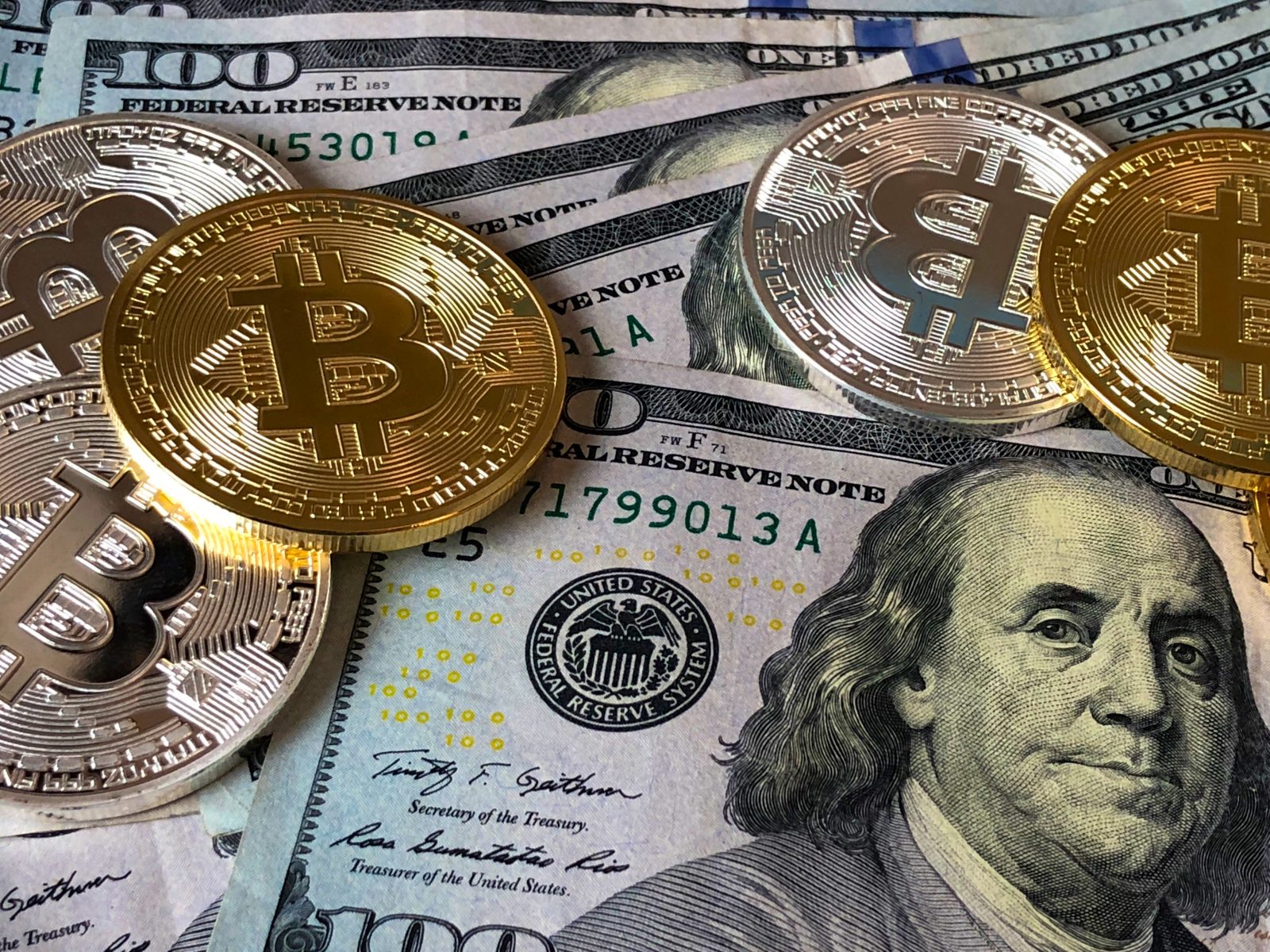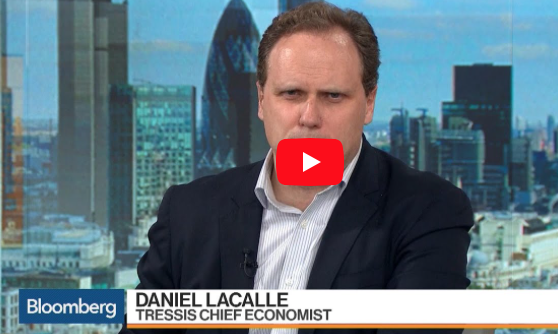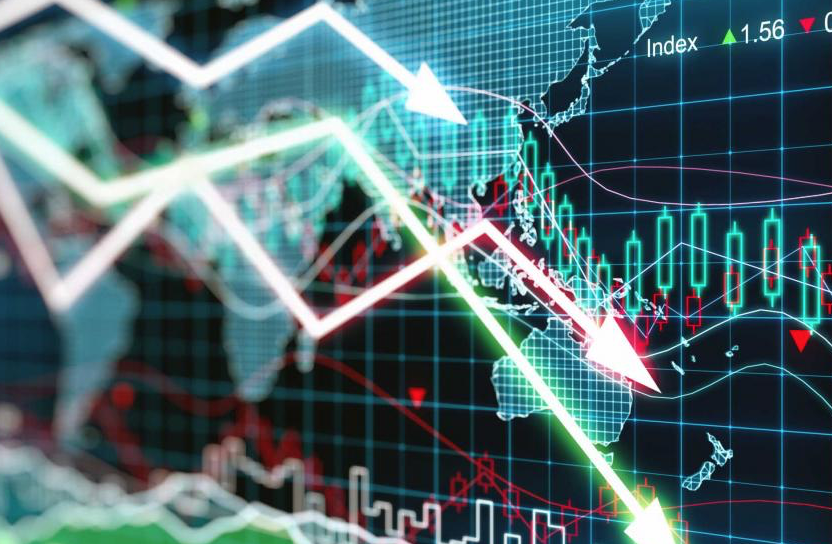In this chat at IG TV we discuss the outlook for copper and other base metals.
In this chat at IG TV we discuss the outlook for copper and other base metals.

We have been reading numerous comments recently about a forthcoming recession and the next crisis, particularly on the tenth anniversary of the collapse of Lehman Brothers.
The question is not whether there will be a crisis, but when. In the past fifty years, we have seen more than eight global crises and many more local ones, so the likelihood of another one is quite high. Not just because of the years passed since the 2007 crisis, but because the factors that drive a global crisis are all lining up.
What drives a financial crisis? Three factors.
What are the main factors that could trigger the next financial crisis?
The fallacy of synchronized growth triggered the beginning of what could lead to the next recession. A generalized belief that monetary policy had been very effective, growth was robust and generalized, and debt increases where just a collateral damage but not a global concern. And with the fallacy of synchronised growth came the excess complacency and the acceleration of imbalances. The 2007 crisis erupted because in 2005 and 2006 even the most prudent investors gave up and surrendered to the rising-market beta chase. In 2017 it was accelerated by the incorrect belief that emerging markets were fine because their stocks and bonds were soaring despite the Federal reserve normalization.
What will the next crisis look like?
Nothing like the last one, in my opinion. Contagion is much more difficult because there have been some lessons learnt from the Lehman crisis. There are stronger mechanisms to avoid a widespread domino effect in the banking system.
When the biggest bubble is sovereign debt the crisis we face is not one of the massive financial market losses and real economy contagion, but a slow fall in asset prices, as we are seeing, and global stagnation.
The next crisis is not likely to be another Lehman, but another Japan, a widespread zombification of global economies to avoid the pain of a large re-pricing of sovereign bonds, that leads to massive tax hikes to pay the rising interests, economic recession and unemployment.
The risks are obviously difficult to analyse because the world entered into the biggest monetary experiment in history with no understanding of the side effects and real risks attached. Governments and central banks saw rising markets above fundamental levels and record levels of debt as collateral damages, small but acceptable problems in the quest for a synchronised growth that was never going to happen.
The next crisis, like the 2007-08 one, will be blamed on a symptom (Lehman in that case), not the real cause (aggressive monetary policy incentivising risk-taking and penalising prudence). The next crisis, however, will find central banks with almost no real tools to disguise structural problems with liquidity, and no fiscal space in a world where most economies are running fiscal deficits for the tenth consecutive year and global debt is at all-time highs.
When will it happen? We do not know, but if the warning signs of 2018 are not taken seriously, it will likely occur earlier than expected. But the governments and central banks will not blame themselves, they will present themselves -again- as the solution.
In this video from Hedgeye’s Investing Summit 2018, Keith McCullough and Daniel Lacalle discuss the eurozone slowdown, as well as the earnings season, the macroeconomic and political risks and the implications of rising fiscal imbalances in most European economies.

The FT recently run an article that states that “leading central banks now own a fifth of their governments’ total debt”.
The figures are staggering. Without any recession or crisis, major central banks are purchasing more than $200bn a month in government and private debt, led by the ECB and the Bank of Japan.
A recent report by Nick Smith, an analyst at CLSA, warns of what he calls ” the nationalization of the secondary market .”
The Bank of Japan, with its ultra-expansionary policy, which only expands its balance sheet, is on course to become the largest shareholder of the Nikkei 225’s largest companies. In fact, the Japanese central bank already accounts for 60% of the ETFs market (Exchange traded funds) in Japan.
What can go wrong? Overall, the central bank not only generates greater imbalances and a poor result in a ‘zombified’ economy as the extreme loose policies perpetuate imbalances, weaken money velocity and incentivize debt and malinvestment.
Believing that this policy is harmless because “there is no inflation” and unemployment is low is dangerous. The government issues massive amounts of debt and cheap money promotes overcapacity and poor capital allocation. As such, productivity growth collapses, real wages fall and purchasing power of currencies fall, driving the real cost of living up and debt to grow more than real GDP. That is why, as we have shown in previous articles, total debt has soared to 325% of GDP while zombie companies reach crisis-high levels, according to the Bank of International Settlements.
Government-issued liabilities monetized by the central bank are not high-quality assets, they are an IOU that is transferred to the next generations, and it will be repaid in three ways: with massive inflation, with a series of financial crises or with large unemployment. Currency purchasing power destruction is not a growth policy, it is stealing from future generations. The “placebo” effect of spending today the Net Present Value of those IOUs means that, as GDP, productivity and real disposable income do not improve, at least as much as the debt issued, we are creating a time bomb of economic imbalances that only grows and will explode sometime in the future. The fact that the evident ball of risk is delayed another year does not mean that it does not exist.
The government is not issuing “productive money” just a promise of higher revenues from higher taxes, higher prices or confiscation of wealth in the future. Money supply growth is a loan that government borrows but we, citizens, pay. The payment comes with the destruction of purchasing power and confiscation of wealth via devaluation and inflation. The “wealth effect” of stocks and bonds rising is inexistent for the vast majority of citizens, as more than 90% of average household wealth is in deposits.
In fact, massive monetization of debt is just a way of perpetuating and strengthening the crowding-out effect of the public sector over the private sector. It is a de facto nationalization. Because the central bank does not go “bankrupt”, it just transfers its financial imbalances to private banks, businesses, and families.
The central bank can “print” all the money it wants and the government benefits from it, but the ones that suffer financial repression are the rest. By generating subsequent financial crises through loose monetary policies and always being the main beneficiary of the boom, and the bust, the public sector comes from these crises more powerful and more indebted, while the private sector suffers the crowding-out effect in crisis times, and the taxation and wealth confiscation effect in expansion times.
No wonder that government spending to GDP is now almost 40% in the OECD and rising, the tax burden is at all-time highs and public debt soars.
Monetization is a perfect system to nationalize the economy passing all the risks of excess spending and imbalances to taxpayers. And it always ends badly. Because two plus two does not equal twenty-two. As we tax the productive to perpetuate and subsidize the unproductive, the impact on purchasing power and wealth destruction is exponential.
To believe that this time will be different and governments will spend all that massive “very expensive free money” wisely is simply delusional. The government has all the incentives to overspend as its goal is to maximize budget and increase bureaucracy as means of power. It also has all the incentives to blame its mistakes on an external enemy. Governments always blame someone else for their mistakes. Who lowers rates from 10% to 1%? Governments and central banks. Who is blamed for taking “excessive risk” when it explodes? You and me. Who increases money supply, demands “credit flow” and imposes financial repression because “savings are too high”? Governments and central banks. Who is blamed when it explodes? Banks for “reckless lending” and “de-regulation”.
Of course, governments can print all the money they want, what they cannot do is convince you and me that it has a value, tat the price and amount of money they impose is real just because the government says so. Hence lower real investment, and lower productivity. Citizens and companies are not crazy for not falling into the trap of low rates and high asset inflation. They are not amnesiac.
It is called financial repression for a reason, and citizens will always try to escape from theft.
What is the “hook” to let us buy into it? Stock markets rise, bonds fall, and we are led to believe that asset inflation is a reflection of economic strength.
Then, when the central bank policy stops working -either from lack of confidence or because it is simply part of the liquidity-, and markets fall to their deserved valuations, many will say that it is the fault of “speculators”, not the central speculator.
When it erupts, you can bet your bottom dollar that the consensus will blame markets, hedge funds, lack of regulation and not enough intervention. Perennial intervention mistakes are “solved” with more intervention. Government won on the way up, and wins on the way down. Like a casino, the house always wins.
Meanwhile, the famous structural reforms that had been promised disappear like bad memories.
It is a clever Machiavelian system to end free markets and disproportionately benefit governments through the most unfair of competitions: having unlimited access to money and credit and none of the risks. And passing the bill to everyone else.
If you think it does not work because the government does not do a lot more, you are simply dreaming.
My last interview on Bloomberg TV talking about sovereign bonds and market risks.
Don’t miss it!
My interview on Real Vision talking about emerging markets and global challenges
You can watch the full interview in realvision.com
My interview with Dale Pinkert @ForexStopHunter during the F.A.C.E. Webinar.

Any tax cut will always be attacked by the interventionist crowd. The main argument is deficits. Something I find amusing because those same interventionists are the ones that defend massive deficits when it comes from rising expenditure. Why? Because government spending empowers politicians and their crony sectors while tax cuts empower citizens. Read More

Watch the video here .
In this interview we comment on the risks of emerging markets, rising imbalances, and a consensus bet on a weak US dollar and low rates that has led to large fiscal and, in some cases, trade deficits.
It could be the arrival of a “sudden stop”. As I explain in Escape from the Central Bank Trap (BEP, 2017), a sudden stop happens when the extraordinary and excessive flow of cheap US dollars into emerging markets suddenly reverses and funds return to the U.S. looking for safer assets. The central bank “carry trade” of low interest rates and abundant liquidity was used to buy “growth” and “inflation-linked” assets in emerging markets. As the evidence of a global slowdown adds to the rising rates in the U.S. and the Fed’s QT (quantitative tightening), emerging markets lose the tsunami of inflows and face massive outflows, because the bubble period was not used to strengthen those countries’ economies, but to perpetuate their imbalances.

Los banqueros centrales son como los “bomberos pirómanos” que crean una crisis tras otra que luego tratan de resolver, según ha comentado un economista y gestor de fondos de cobertura a Business Insider.
Daniel Lacalle, economista jefe de Tressis SV y director de fondos de Adriza International Opportunities, dijo a Business Insider en una entrevista que culpa a los banqueros centrales de la crisis financiera del 2008por no entender los mercados financieros modernos mientras siguen usando herramientas de los años 60 para probar y controlaros.
Los bancos centrales redujeron significativamente las tasas de interés antes del colapso de las hipotecas subprime de 2008, lo que alentó a las personas a invertir en activos que se consideraban seguros, como la vivienda. También permitió a los bancos ofrecer préstamos baratos y, de hecho, alentó la burbuja inmobiliaria hasta que estalló, argumentó Lacalle.
“Los banqueros centrales se presentaron a sí mismos como la solución al problema que ellos mismos crearon. Lo llamo el bombero pirómano”, dijo. “Creas un fuego masivo y luego te presentas…para detenerlo”.
Lacalle cree que parte del problema es que los banqueros centrales están utilizando herramientas creadas para economías más simples del pasado e inadecuadas para los mercados financieros complejos y modernos.
El economista español, que fue nombrado por Richtopia como uno de los veinte economistas más influyentes en 2016, ha trabajado con tres presidentes del banco central y dijo que cree que las políticas presentadas, aunque no entiende completamente cómo son los grandes mercados financieros y los efectos de sus políticas.
El experto pidió reglas de política monetaria técnica más estrictas que significaran que las decisiones sobre el suministro monetario solo puedan tomarse en base a las métricas del mercado y no a discreción de las personas que trabajan para los bancos centrales.
Lacalle cree que los bancos centrales están repitiendo el mismo error que condujo a la última crisis, creando la próxima burbuja a través de la compra continua de deuda pública (ahora en torno a los 20 millones de dólares). Esto ha elevado el precio de los bonos, inflado el valor de los activos financieros e inyectado dinero excedente en la economía.
“Hay un punto donde la percepción del valor de los inversores comienza a resquebrajarse”, dijo Lacalle. “El problema de estas políticas es que destruimos completamente lo que es el dinero…al hacer que el dinero sea completamente inútil , básicamente promueves la inversión en centros comerciales y el endeudamiento”.
El Fondo Monetario Internacional (FMI) advirtió en abril que la deuda global ha alcanzado un récord de 164.000 millones de dólares, o el 225% del PIB. La directora del FMI, Christine Lagarde, se refirió al creciente endeudamiento como “nubes que se acumulan en el horizonte”.
Lacalle advirtió que el enorme endeudamiento podría provocar un estancamiento económico o, en el peor de los casos, una crisis peor que la de 2008. Esto se debe a que la deuda soberana supone un porcentaje mucho mayor de la economía que la vivienda.
“Creo que los banqueros centrales realmente creen que las burbujas creadas en los mercados financieros son algún tipo de daño colateral benigno“, dijo Lacalle, quien agregó que las políticas han supuesto una lotería para los inversores pero que han llevado al resto de la población a endeudarse.